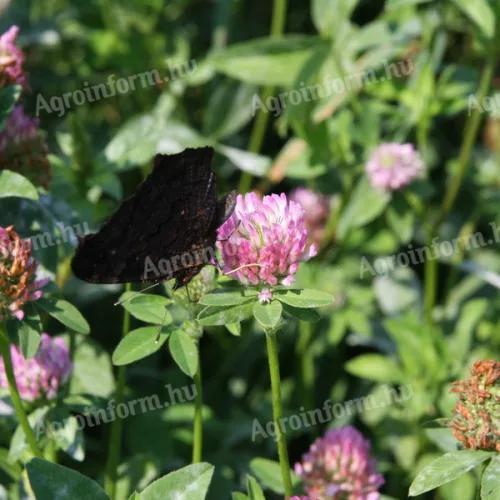 Pest county, 2009 Pilisszentlászló
Pest county, 2009 Pilisszentlászló
 8
8
| Price |
3.280 HUF +VAT |
| Seed coating |
No |
| Quantity unit |
Kilogram |
Description
100% red clover, for solo or blended use.
Supplied in 25 kg bags.
Seed without strips.
General characteristics:
Red clover stretches higher than white testicle and is a bushy type, 2-year-old plant. It reaches a height of 40-50 cm. It can withstand prolonged flooding and prolonged drought. Medium water demand, lime tolerant, good frost tolerance, starts above 2-3 °C after frosts.
Prefers slightly acid or neutral soils and cooler, more humid climates. Leaves are lush, ovate or oblong-lanceolate. Leaf:stem ratio medium. Very good resprouting, bushy. In places where alfalfa cannot be planted because of acidic soils (obviously not to extremes, up to pH 5-6), red clover is definitely recommended.
It is a biennial, but in optimum weather it can produce up to the third year, typically flowering by the 3rd year.
Sowing information:
- Suggested seed rate: 18-20 kg/ha (grain row) if broadcast seed is applied. Sow at a depth of 1-2 cm from the second half of March to mid-April.
- For sowing in cereal strips, we recommend using a fine seed drill, if possible followed by a weed comb. Although this technique does not allow very precise work, it does give good results. Red clover lies dormant next to the grain during the growth phase and then starts to grow as the grain matures and is exposed to sunlight.
- After harvesting, the red testicle quickly gains strength, and by mid-September in a normal year the first mowing is possible.
It has a soil-improving effect:
Red testicle not only functions as a potential alternative source of fodder, but is also a very effective soil amendment tool. A very important feature is that it has a thick, strong main root that penetrates 1.5-2 metres deep into the soil. This makes it a very good soil loosener. It also has a very dense secondary root system. The crushed testicle composts on the soil surface and the root system loosens the soil to a depth of 60 cm by February.
- Soil loosening effect, roots loosen the soil, no need for mechanical soil loosening
- Nitrogen fixation, used by the following spring crop (sunflower or maize)
- Water retention effect
- Weed suppression
Termination:
Red pea should be sown when the next crop is spring rather than autumn, and certainly not butterfly. As it provides a lot of nitrogen, this should be taken into account if the producer is not an organic farmer. Termination can be done by disc (in several passes) or even chemically.
Use as feed:
It can be mown twice a year, gives a large mass and has a high protein content. It can also be used to produce red clover forage, especially on small farms. It is very difficult to make hay from red whey, farmers say it needs about 2x as much drying time as alfalfa because of the thick stalk, but by then the leaves are separated from the stalk and are falling off. A well-wrapped bale, however, is often preferred by cattle to alfalfa senasses. Because of these disadvantages, it is recommended that red clover be sown with a hybrid periwinkle or a two-year-old Italian periwinkle for feeding purposes.
https://sersiafarm.hu/voroshere
Identifier: 7495808
Updated: 22 April 2025 at 17:32:35 CEST





















